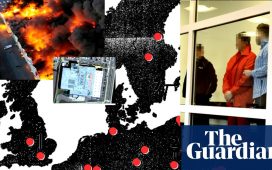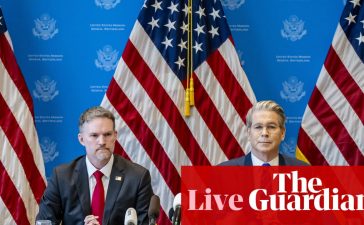In May of this year, the Biden administration announced sweeping 100 percent import tariffs on Chinese electric vehicles as well as the batteries and minerals that go in them. These tariffs were announced at a time when very few Chinese cars were on American roads. Just a few years ago, fierce competition from upstart Chinese automakers would have been unthinkable, but China has come to dominate the supply chain for minerals and batteries and has begun to make affordable, attractive electric vehicles by upstart brands such as BYD, Geely, and Nio. The threat from Chinese electric vehicles led Tesla chief executive officer Elon Musk to declare in January of this year, “Frankly, I think, if there are not trade barriers established, they [Chinese automakers] will pretty much demolish most other companies in the world.” In reflecting on the tariffs, Ford chief executive officer Jim Farley signaled that they might give American automakers a temporary reprieve: “And if we don’t make profitable [electric vehicles] in the next five years, what is the future? We will just shrink into North America.”
What’s notable is that these moves to impose tariffs and other restrictions on Chinese electric vehicles, minerals, and batteries are justified on national security grounds. What is going on here? In what way is China’s domination of minerals processing, batteries, and potentially automobiles a threat to U.S. national security?
With the rise of electric vehicles, renewables, and battery storage, energy and transportation systems are fundamentally changing and driving a transformation in economies around the world. The resources required for the 21st-century economy involve a host of minerals such as lithium, graphite, copper, nickel, and manganese. While these minerals and refined products are sourced from various countries, China heavily dominates their processing and other stages along various supply chains. Recently, China has aimed to dominate the market for electric vehicles in the same way it has come to dominate the solar photovoltaic market.
Republican and Democratic lawmakers alike have suggested that dependence on China for metals and materials is a national security risk. But what they mean when they invoke national security is not always clear — nor are the solutions. U.S. policymakers have identified four different national security risks associated with this supply chain dependence. Of these, we emphasize the risks to the commanding heights, a core strategic sector of the economy that can become a large source of wealth for the country in this century.
While efforts to diversify supply chains away from China are welcome and important, these different risks are potentially leading the United States to an overreaction against Chinese involvement in the U.S. economy. America has fallen behind on key battery technologies and may cut itself off from the opportunity to learn from China’s recent manufacturing advances and fall even further behind. Targeted efforts to allow some Chinese firms to partner with American companies could help the United States play catch-up but would require a more nuanced approach than what we have seen of late.
Clean Energy Technologies and National Security
Policymakers have flagged four dimensions of national security with respect to China’s domination of these supply chains. Each may require distinct policy, security, and investment responses.
The first has to do with dual-use technologies that have both civilian and military applications. The concern is that in the event of a conflict, the United States will not have access to key materials necessary both to sustain its economy and to produce weapons. Possible solutions to this problem include more extensive use of minerals stockpiles.
The second involves risks of coercion by resource holders. Russia has repeatedly tried to leverage its position as an energy superpower for political concessions, including in the run-up to and in the wake of its invasion of Ukraine. In a dispute with Japan in the 2010s, China withheld exports of rare earth minerals with a variety of industrial and military applications. One concern is that China might try to use its critical minerals dominance as a source of leverage, fears somewhat justified by the export controls China has imposed on germanium, gallium, graphite, and antimony over the past year.
The third speaks to cybersecurity risks. Electric vehicles and solar panels are connected to networks, and policymakers fear that data derived from these devices could be used for nefarious purposes, or there might be backdoor ways to remotely control these devices. This fear prompted the Biden administration in February 2024 to ask the Commerce Department to study the national security risks of Chinese electric vehicles. Last week, the Commerce Department recommended that the United States should ban Chinese software and hardware on internet-linked electric vehicles.
The fourth deals with the risks to the commanding heights of the economy through domination by a peer competitor. The last of these is potentially the most critical, yet least discussed. The broad logic of the commanding heights argument is that the material basis of state power is partially military and partially economic. Because economic power can be converted into military capability, states have an interest in nurturing strategically important sectors that can generate wealth to finance their militaries. Clean technology is one of a handful of growth sectors that the Biden administration has identified as central to the country’s future.
The Commanding Heights
The security logic of the commanding heights risk is perhaps the primary basis for actions the Biden administration has taken to develop a domestic metals and material supply chain for electric vehicles and batteries and more recent moves to protect the automobile sector. The logic is not dissimilar to the rationale for the CHIPS and Science Act, with batteries, electric vehicles, and other clean technologies set to become as ubiquitous as semiconductors in the coming decades.
The notion of “commanding heights” of the economy, of strategically important sectors that states want to sustain, was once ridiculed as an artifact of a bygone era of heavy state intervention in Western economies and the failed policies of communism in the Soviet Union. However, China’s success and ability to change its source of comparative advantage through patterns of state subsidy and investment to dominate whole industries have changed the conversation, particularly in an era when market forces alone will not deliver the clean energy transition as quickly as is required.
Industrial policy, the intentional efforts by states to support certain industries and discourage others, has become integral to efforts to hasten the clean energy transition. Alongside that change is the COVID-era realization that globalization wrought undesirable supply chain vulnerabilities that could only be addressed with more domestic production. States are now seeking to reclaim a more explicit role in directing which industries to attract and support, to generate tax revenue to pay for services, to provide good employment, and to support other public purposes such as environmental sustainability.
For the Biden administration, this “foreign policy for the middle class” is the embodiment of this revived role for the federal government with the Bipartisan Infrastructure Act, the Inflation Reduction Act, and the CHIPS Act. The notion that some sectors are more strategically important than others requires justification, lest it become a “get out of jail free” card to justify protection of national industries at the expense of foreign competition. Such moves might ultimately be self-defeating if a country, even with aggressive subsidies and protection, cannot generate a viable industry.
Industries that produce components and inputs that generate military capability, such as aviation and shipbuilding, are strategically important. This logic was a major factor in congressional and Biden administration support for the CHIPS Act, with semiconductor chips having so many military applications. The concentration of high-end chip manufacturing in a single company in Taiwan or advanced lithography from a single supplier from Netherlands was seen as a strategic vulnerability, enough to warrant a $53 billion government investment.
It is not clear that supply chains for batteries have quite this degree of sole supplier industry concentration, though Chinese firms CATL (37 percent) and BYD (16 percent) have an outsized share of global production of batteries. Nevertheless, the potential risks are clear. Chinese dominance of batteries and solar technology is relatively recent and was driven by state action. Moreover, the current scale of those industries is only a small fraction of what they will ultimately become. For example, in 2023, the lithium-ion battery market was valued at $56.8 billion but by one estimate is expected to rise to nearly $187.1 billion by 2032. Similarly, the global solar photovoltaics panel market was nearly $184.9 billion in 2021 and is estimated to grow to almost $300 billion by 2028.
If more sectors of the economy (the power sector and transportation, to start) electrify, then batteries will become cornerstones of the 21st-century economy in the way that chips were in the 20th century. While there may be other industries that emerge as core economic sectors and sources of productivity, battery production and electric vehicles will certainly be among them. Ceding most of these markets to other states, notably the People’s Republic of China, would mean the United States would forgo revenue from a major growth industry. Once these industries are as pervasive as chips, the United States could face more systemic risks in the event of a disruption in supply chains. Most important, it would be comparatively poorer than it otherwise might be, though that might be difficult to quantify with any economic precision, as other sectors such as AI also might generate growth and profits.
From an international relations perspective, China’s domination of solar, batteries, and cars would confer large relative gains with which China could finance military expenditures. From a geostrategic competitive perspective, that would allow China to close the gap in military capability with the United States and perhaps contribute to an even more dangerous power transition moment. And, in wartime, manufacturing companies that make goods for the civilian economy can be repurposed. This is another major reason why it is crucial for the United States to retain domestic manufacturing capacity.
The Implications for Policy
The implications of these observations for policy, however, are not obvious. Decoupling the U.S. and Chinese economies is neither realistic nor desirable. Conversations in Washington are now focused on de-risking through diversification of supply chains to include more “on-shoring” (domestic production) and “ally-shoring” (sourcing from friendly countries) of supplies. However, the United States has had difficulty identifying areas in which Chinese involvement in the U.S. economy is still acceptable.
Years ago, former Secretary of Defense Robert Gates suggested that the approach to national security for potential rivals ought to be one of a “small yard, high fence” for which only a handful of critical areas are subject to export controls. Analysts have applied that concept to China, both for export controls but also in thinking about which technology sectors might be subject to limits for Chinese imports and investments. In recent years, the yard of potentially excluded products has grown larger, beyond areas such as weapons systems, to include mobile communications and high-end semiconductors to batteries, port equipment, and electric vehicles.
Critics worry that overzealous use of restrictions on national security grounds may slow down the energy transition by adding to the costs. Moreover, interdependence between the United States and China may also function as a firebreak that limits either party’s willingness to go to war. For interdependent economies, there are huge potential costs to both sides of a further rupture in their relations.
The United States is trying to reduce its dependence on Chinese supply chains in the minerals and batteries space through policies such as the electric vehicle tax credit under the Inflation Reduction Act. The $7,500 vehicle tax credit is designed to incentivize production of electric vehicles in the United States/North America and among U.S. close trading partners. The act has already spurred major investments in battery production in the United States, and the Biden administration has supported battery supply chains through other instruments such as the Department of Energy’s Loan Programs Office and the Defense Production Act. Already, some $95 billion in investments have been announced to support battery-related mining, battery manufacturing, and electric vehicle production.
While those announcements are welcome, there have been some warning signs. In the face of Chinese overcapacity and cut-throat competition, the prices of minerals and batteries have declined precipitously over the past year. This has led the Biden administration to consider a price floor for domestically produced minerals. Moreover, Western manufacturers of batteries may not be competitive with Chinese producers when those facilities come on line. In recent months, a number of Western battery projects have faced setbacks, including the Swedish battery start-up Northvolt that had a large order with BMW cancelled.
It is also not clear that Western firms in the battery and electric vehicle space can catch up without Chinese involvement. China is now at the technology frontier of advanced battery manufacturing. Over the past year, a different battery chemistry, lithium iron phosphate, has become the dominant standard over nickel manganese cobalt. Lithium iron phosphate batteries do not require nickel or cobalt and are both cheaper to produce and more durable than nickel manganese cobalt batteries, but are less energy dense and thus potentially have less range. Only Chinese firms have figured out a way to make lithium iron phosphate batteries with more extended range.
U.S. firms have realized that they are behind Chinese battery makers and have sought to partner with them. In February 2023, Ford and the Chinese battery manufacturer CATL announced a licensing agreement to build lithium iron phosphate batteries in Michigan at a new $3.5 billion plant. That agreement came under criticism for Chinese involvement. In November 2023, in light of rising costs and softer demand for electric vehicles, Ford said it would proceed but scale back its investment to $2 billion.
But even that scaled-back agreement could be vulnerable. In June 2024, the House Select Committee on the Chinese Communist Party wrote a letter alleging that suppliers to CATL use Uyghur forced labor from Xinjiang in sourcing materials for their batteries. In a separate letter, they also charged that Chinese battery maker Gotion, which also has U.S. facilities and is aiming to build a new factory in Michigan, has similar labor problems. The House committee requested the Department of Homeland Security, which manages the Uyghur Forced Labor Prevention Act Entity List, to blacklist both companies from importing into the United States.
There are other potential obstacles to Chinese involvement in the U.S. battery sector. In May 2024, the Department of Energy released the foreign entity of concern rules for the Inflation Reduction Act, which forbid companies controlled by governments from specific countries including China from being eligible for Inflation Reduction Act tax credits. While Chinese state-owned companies would be ineligible to receive tax credits, a privately owned company that had less than 25 percent Chinese ownership, stock, or board seats would potentially be eligible under foreign entity of concern guidance. That provides a narrow path for some Chinese manufacturers to partner with American companies, but Chinese firms might fear new obstacles could be invented.
U.S. policymakers are alarmed by Chinese electric vehicles. The Chinese company BYD and other automakers now produce electric vehicles that are attractive and far more affordable than those made by U.S. car companies. While Chinese exports of electric vehicles to the United States were only about 2 percent of car imports in 2023, the emergence of low-cost Chinese electric vehicles and excess domestic capacity in the Chinese domestic market poses a risk to other countries’ manufacturing capacity as Chinese car manufacturers seek to find overseas markets.
In May 2024, the United States announced tariff increases on a range of Chinese products, including electric vehicles, solar cells, electric vehicle batteries, non–electric vehicle lithium-ion batteries, natural graphite, as well as other products. These targeted actions on about $18 billion of Chinese imported goods follow a previous round of more wide-ranging trade disputes during the Trump administration.
In contrast to the United States, Europe is simultaneously protecting its electric vehicle industry from Chinese imports and encouraging Chinese investments to generate employment in Europe and learn from Chinese companies. Although there may be valid concerns or questions over specific projects, the United States should avoid classifying any Chinese involvement in the batteries or electric vehicle space as inherently incompatible with U.S. interests. CATL has expertise in building lithium iron phosphate batteries, and Ford does not. Thus, one principle for Chinese involvement in projects ought to be whether American manufacturers can gain valuable knowledge, in the same way that China used domestic content rules with foreign firms to gain expertise.
There may be some softening of U.S. policymakers’ willingness to allow Chinese investment in to the United States. For example, Republican candidate for president Donald Trump has on several occasions indicated he would support Chinese automobile manufacturing in the United States. Regardless of the outcome of the 2024 election, the United States should take a page from China in the 1990s when it encouraged foreign direct investment into China in exchange for strong local content rules and technology transfer. The United States can also learn from its own past when it was concerned about Japanese car exports in the 1980s. The Reagan administration negotiated a voluntary export restraint on Japanese car exports to the United States, which spurred investment by Japanese automakers into the United States.
Being strategic about clean technology will require clear-eyed thinking about how to support and build domestic capabilities in the United States. Clean technology is a vital growth sector where the United States has fallen behind China. To get back in the game, the United States could allow specific areas of trade and investment with China to give U.S. firms the ability to better learn from China’s recent manufacturing experience — while shoring up supply chains globally and ensuring recent investments in domestic production and processing stay on track.
Joshua Busby is a professor at the LBJ School of Public Affairs at the University of Texas–Austin. From 2021 to 2023, he served as a senior advisor for climate at the U.S. Department of Defense.
Morgan Bazilian is a professor at the Colorado School of Mines. Previously he was lead energy specialist at the World Bank.
Emily Holland is the deputy political advisor for critical undersea infrastructure at NATO Allied Maritime Command and an assistant professor at the U.S. Naval War College.
Image: Matti Blume via Wikimedia Commons











